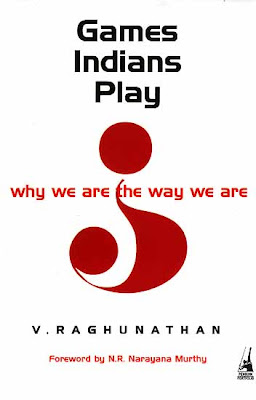Innovation by accident ?
Famous Author Edward De Bono, in his book ‘Six thinking hats’ talks about the ‘lateral thinking’ concept. This new way of lateral thinking is commonly known as ‘out of the box’ thinking and our right side of the brain (which is intuitive in nature) is responsible for this. The author argues that the lateral thinking can be cultivated in any individual or organization by ‘connecting’ things. What is this connecting is all about? How different this lateral thinking is from ‘sequential’ or ‘normal’ thinking? Can we cultivate innovation by connecting things? Yes. It is possible with ‘De Bono’ style thinking.
De Bono suggests choosing two random page numbers in English dictionary and pickup words in the right hand bottom of each of those pages. Now try to connect these two words. Say for example if my words are ‘programming’ and ‘desert’ then I can think of ‘writing a computer program to measure temperature of remote desert’. This will open up new opportunities and the ‘sequential’ thinking needs to be applied to execute the lateral thinking idea. This is also called as ‘blue ocean strategy’ in business world, where the culmination of two different ideas from different industries forms a new ‘killer’ business idea.
This lateral thinking is widely used in the industry to make the decision making faster and promote innovation. Recently Tata Consultancy Services (TCS) has given training to Indian cricket team for innovating new ideas in the game. Also in his famous speech at Stanford University Apple CEO Steve Jobs talks about the importance of ‘connecting the dots’. Leaving them apart, can an accident become ‘innovation’? If yes how it is?
In the year 1978 the Hewlett-Packard (HP) company, formed their ‘HP-labs’ for nurturing innovation in Palo Alto, California. An engineer working on developing thin film technology for the hardware chips was testing the response of thin film to electrical stimulations. The electricity superheated the medium, and the fluid under the thin film was expelled. This particular accident caused the engineer to think more: ‘what if the jets of fluid can be controlled?’ Instead of heating the thin film how about heating the ink and making it flow on paper in a controlled fashion? This thinking caused the invention of Thermal Ink Jet (TIJ) technology which laid the foundation stone for thermal inkjet printers and the rest is history. By ‘connecting’ the film heating with ink heating made the accident as an innovation.
De Bono suggests choosing two random page numbers in English dictionary and pickup words in the right hand bottom of each of those pages. Now try to connect these two words. Say for example if my words are ‘programming’ and ‘desert’ then I can think of ‘writing a computer program to measure temperature of remote desert’. This will open up new opportunities and the ‘sequential’ thinking needs to be applied to execute the lateral thinking idea. This is also called as ‘blue ocean strategy’ in business world, where the culmination of two different ideas from different industries forms a new ‘killer’ business idea.
This lateral thinking is widely used in the industry to make the decision making faster and promote innovation. Recently Tata Consultancy Services (TCS) has given training to Indian cricket team for innovating new ideas in the game. Also in his famous speech at Stanford University Apple CEO Steve Jobs talks about the importance of ‘connecting the dots’. Leaving them apart, can an accident become ‘innovation’? If yes how it is?
In the year 1978 the Hewlett-Packard (HP) company, formed their ‘HP-labs’ for nurturing innovation in Palo Alto, California. An engineer working on developing thin film technology for the hardware chips was testing the response of thin film to electrical stimulations. The electricity superheated the medium, and the fluid under the thin film was expelled. This particular accident caused the engineer to think more: ‘what if the jets of fluid can be controlled?’ Instead of heating the thin film how about heating the ink and making it flow on paper in a controlled fashion? This thinking caused the invention of Thermal Ink Jet (TIJ) technology which laid the foundation stone for thermal inkjet printers and the rest is history. By ‘connecting’ the film heating with ink heating made the accident as an innovation.
Now what about ‘connecting’ this printer businesses ‘shaving razor’ business? Gone crazy? No. I am not crazy. Most of us would have observed Gillette sells its shaving stick at a very competitive price (Say 200 INR) but their blades are very costly (Say 100 INR). You are forced to buy Gillette blades (Even though it is costly) because you have already bought the stick from them. Now what about selling printers at a very optimal price and then cartridges at high cost? Sounds great! Can you see the ‘connection’ now? That’s exactly what HP is doing with their printer business. They have formed the blue-ocean strategy by learning from shaving razor business.
It’s really amazing to learn and experience the lateral thinking. So let us start ‘connecting’ things from now on!

Comments